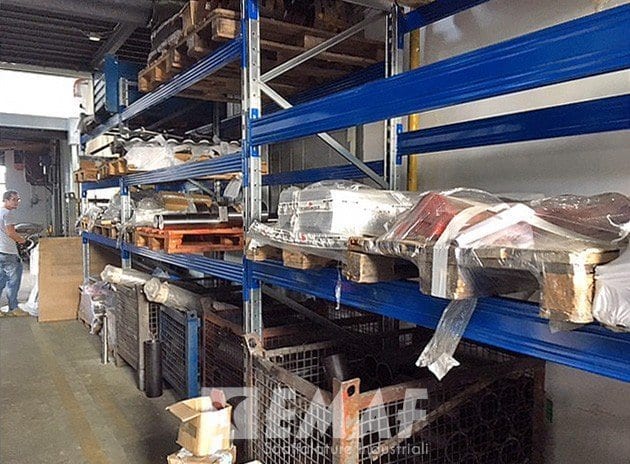In a previous post, we explored the requirements for planning the installation of a metal industrial shelving system in a warehouse correctly. Today, however, we focus on what fundamental data those who use a warehouse must know on their shelves. They are not details, but essential elements for compliance with regulations and the safety of goods and people.
First of all, it is important to remember how the equipment – in this case the industrial metal shelves for the warehouse – must be made in accordance with the specifications and drawings of the supplier, in full compliance with the regulations. Only in this way can the shelving supplied be certain that it is a suitable shelving, adequate and made according to all the characteristics envisaged by the regulations.

© giorgio boato studio sulla fotografia
Another decisive aspect is the flooring on which the industrial metal shelving system will rest: the flooring must have a degree of strength, stiffness, and flatness and regularity suitable for operational purposes. Flatness and regularity, in particular, are fundamental aspects: in front of warehouses with shelves up to ten meters high, a minimum slope of the flooring is destined to bring high degrees of non-verticality to the maximum heights.
The supplier of the industrial metal shelving must deliver signs and load-bearing tables containing all the load indications. It will be up to the user to ensure, within the management of his business, that the maximum load conditions declared by the capacity tables are never exceeded, but also that the pallets – most of the time Euro pallets – or the boxes where the goods are placed are used appropriately with respect to the shelves.
Industrial metal shelves must not be taken into account as static and independent elements, in fact, they must always be considered taking into account the movement of goods and the use of forklifts. For this reason, it is essential that the selected forklift truck is compatible with the shelving structure, but that the floor is also suitable for loading and unloading the goods.

Often – in our inspections – we find ourselves dealing with damages inside the warehouse that are very similar to each other in terms of type and frequency, of which those who use forklifts are accused. Going to the bottom of the question, however, during the analyzes it is often found that there is no correspondence between the type of trolley used by the customer and that foreseen in the warehouse design and construction phase: the maneuvering games or the dimensions of the trolley used in fact they do not correspond to what was foreseen in the planning phase. For example, it may happen that the operating radius of a type of forklift truck, with a specific compatible loading unit, is too large for the corridor in which the shelving is located.
Finally, it is important that the supplier of the trolleys, during the sales phase, make sure to deliver a forklift truck compatible with the industrial metal shelving system, so that its use takes place in perfect safety, without damage to things and people.

